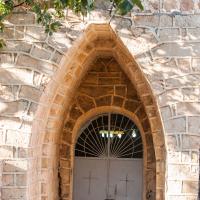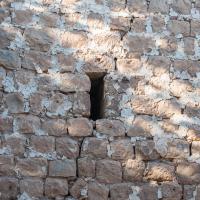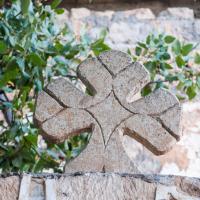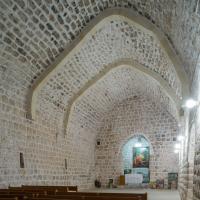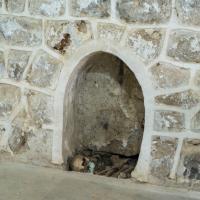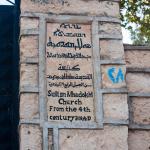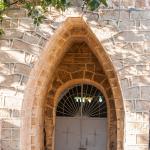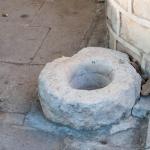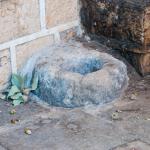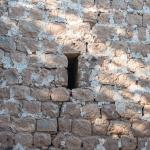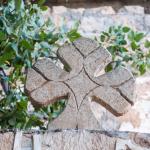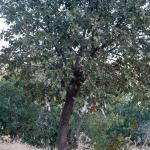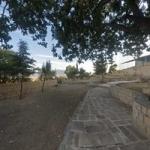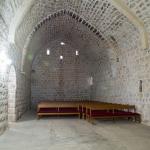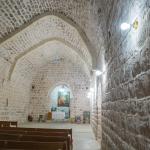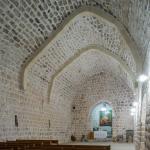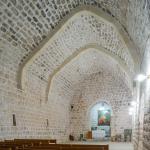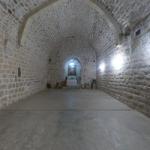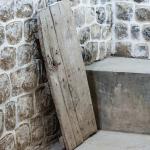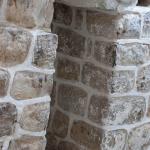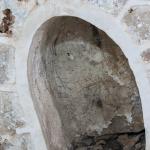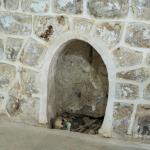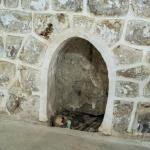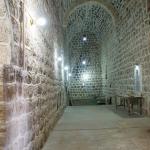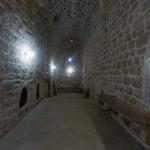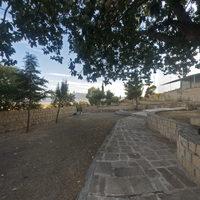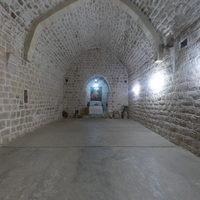Site Profile
The church of Sultan Madokht is found in Aradin, about 150 km from Mosul and 50 km from the city of Dohuk. The village lies in Wadi Sapna, surrounded by Mount Matin to the north and Mount Gara to the south. Its Assyrian name means 'Land of Eden,' expressing its beautiful natural setting. Situated about a half kilometer south of the village, this famous church stands next to a tell likely formed from the ancient settlement. In 1987, Aradin was completely destroyed with the exception of the Church of Sultan Madokht. The church remains in use to the present day, and people from around Iraq come to visit and pray here.
Description & Iconography
Inscriptions
Entrance Inscription: 'Sultan Mhadokht Church / From the fourth century 319 AD'
Memorial Inscription: “A luminous lamp and a grain of mustard in God's generosity. The late father Abd al-Ahad Smano Rais, born in the village of Aradin in 1879. Entered the Institute of St. John the Beloved in Mosul in 1894. He was ordained as a priest on May 15th, 1904, along with his colleague, Yousif Ghenemeh, the patriarch, by the patriarch Mar Yousif Amanuael II. He built the monastery of Sisters of the Sacred Heart in Aradin on August 15th, 1911. He died on February 16th, 1916, and was buried in the Church of Sultan Madokht in Aradin.”
History
An inscribed stone that was presumably found within the Church of Sultan Madokht allows us to date the construction to the 4th century AD (and more specifically, to the years 319–325). Although no systematic documentation of the church has been conducted previously, the local tradition maintains that the structure was built on the exact location where Saint Sultan Madokht was executed along with her two brothers. Sultan Madokht and her brothers were the children of Prince Pholar, who was in charge of the Dorsas principality during the reign of King Shapur II of the Sasanian Empire. On their way back home, Sultan’s youngest brother fall off his horse and went into a coma. While in this dire situation, St. Abda, of a nearby village, helped restore the prince to life. This prince then told his siblings about a dream he had during his coma, in which he saw a bishop kneeling in front of the throne of Christ asking for the prince’s life. As a result, Sultan Madokht and her siblings embraced the Christian faith and asked to be baptized. As the news reached her father, soldiers where sent out to find the three siblings and bring them back for interrogation. After three years, the saint and her brothers were found in a cave near the village of Aradin. The tradition informs us that the three were executed on the spot and were buried in what is now the Church of Sultan Madokht. Today, Sultan Madokht is believed to have performed many miracles, including granting prayers of women unable to conceive and healing many sick people. On May 15th of each year, people of different beliefs gather to celebrate Sultan Madokht and her faith.
Selected Bibliography
Abūnā, Albīr. 1985. Shuhadāʼ al-Mashriq [Martyrs of the East]. Baghdad: Maṭbaʻat al-Khulūd.
Scher, Addai. 1900. Kitāb Sīrat ashʹhar shuhadāʼ al-Mashriq al-qiddīsīyīn [History of the Most Famous Eastern Martyrs]. Mosul: Impr. des Pères Dominicains.

